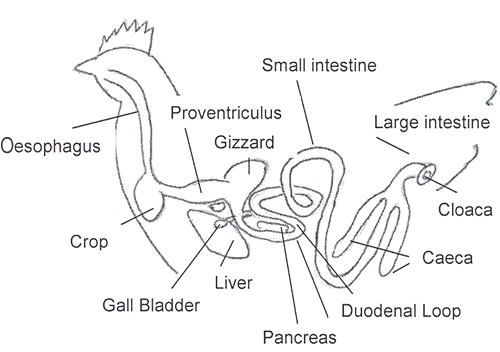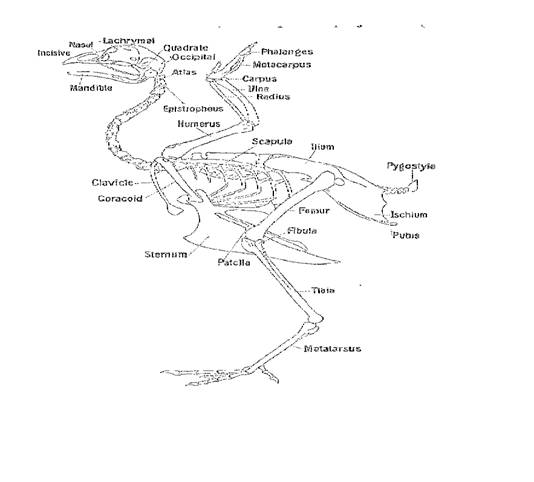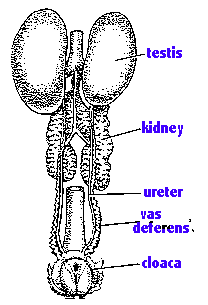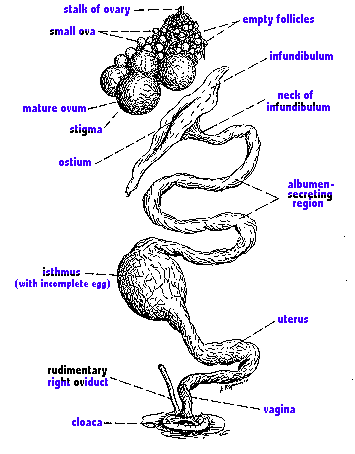
Digestive system of Guinea Fowl (Poultry)-
Mouth is a beak for gathering and pecking. Then food is moistened with saliva containing a starch-reducing enzyme and then swallowed without chewing.
Oesophagus - Crop - Proventriculus - Gizzard is the order of how the food starts being digested. The oesophagus is a flexible tube that carries food from the mouth to the crop. The crop is a temporary storage pouch and is responsible for sending the hunger signal to the brain. The proventriculus is where acids and other enzymes further break down the food. After the food is transported to the gizzard, the gizzard with grit and strong muscles break the food into mash.
Small intestine- Food in the duodenum is neutralized by the addition of more enzymes excreted by the pancreas. These enzymes break down protein. Also added here is bile produced by the liver and stored in the gall bladder. Bile aids in fat digestion. The products of digestion are absorbed from the small intestine and carried to the liver primarily for re-manufacture into body tissue or to provide energy.
Next, the caeca are two blind-ended tubes which provide space for fermentation.
Large intestine is very small and serves as a further absorption site especially for water.
The cloaca or vent is a chamber common to the digestive and urogenital systems. It is responsible for the elimination of feces, urine and the passage of eggs or seminal fluid.
Pancreas controls insulin or blood sugar levels.
The liver is largest organ in the body, divided into two lobes, produces bile and is a major detoxification organ.

Skeletal system of Guinea fowl
The bird skeleton is highly adapted for flight. It is extremely lightweight but strong enough to withstand the stresses of taking off, flying, and landing. One key adaptation is the fusing of bones into single ossifications, such as the pygostyle. Because of this, birds usually have a smaller number of bones than other terrestrial vertebrates. Birds also lack teeth or even a true jaw, instead having evolved a beak, which is far more lightweight. The beaks of many baby birds have a projection called an egg tooth, which facilitates their exit from the amniotic egg.
Birds also have more cervical vertebrae than many other animals; most have a highly flexible neck consisting of 13-25 vertebrae. Birds are the only vertebrate animals to have a fused collarbone (wishbone) or a keeled sternum or breastbone. The keel of the sternum serves as an attachment site for the muscles used for flight. The skeleton is specifically made for flight.
Male Reproduction System- The male possesses two testes, along the back, near the anterior ends of the kidneys. They are elliptical shaped and light yellow in color. |  |
 | Female Reproduction System- Although bird embryos possess two ovaries and oviducts, only the left one normally develops and becomes functional with age. A hen can have a clutch of 20-30 eggs. Guinea fowl eggs hatch in about 21 days. |